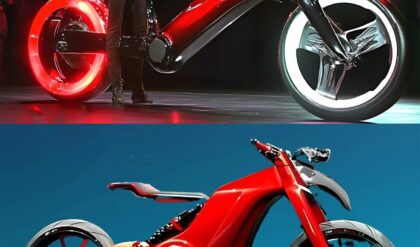The definitive guide to Zeppelin’s finest recorded moments

Jimmy Page performing live onstage, playing his Gibson Les Paul guitar. ROBERT KNIGHT ARCHIVE/GETTY
WORLD-CHANGING RIFFS, BLUES fury, power-ballad grandeur, Hobbits and so much more
This list appears in Rolling Stone’s new collectors edition, Led Zeppelin: The Ultimate Guide to Their Music & Legend.

40
‘In the Evening’ (1979)
On the In Through the Out Door seven-minute opener, Page augments his guitar with a Gizmotron, Jones plays Abba-fied synth, Plant wails about loneliness and Bonham makes like a crocked wildebeest. It’s a nice marriage of Jones’ love of electronics and the band’s innate rock power, as well as its last sweeping anthem.

39
‘All My Love’ (1979)
With a winding synthesizer solo by Jones, the majestic “All My Love” is one of only two Zeppelin songs not written or co-written by Page. It’s Plant’s mystical tribute to his son Karac, who died in 1977 at age five. According to a friend, Page “hated ‘All My Love,’ but because it was about Karac, he couldn’t criticize it.”

38
‘Traveling Riverside Blues’ (1969)
Recorded at a BBC Radio session, this improvised take on a Robert Johnson song is one of their loosest moments. Page showcases his manic acoustic-slide jangle, and Plant workshops the “squeeze my lemon” soliloquy he’d make famous on Led Zeppelin II.

37
‘Four Sticks’ (1971)
Page built this exotic song around a series of needle-stick guitar salvos, but because the meter shifts from 5/8 to 6/8, Zeppelin found it difficult to record and almost ditched it. Then Bonham came into the studio after spending some time in a pub and nailed it, holding two drumsticks in each hand (hence the song’s title).

36
‘Since I’ve Been Loving You’ (1970)
Page spent months on his solo to this epic – then settled on his original demo. Good thing: The slow blues is one of Zeppelin’s most soulful moments, Page’s guitar veering between spare and raucous attack, Jones playing blazing organ and Plant shrieking pure heartbreak.

35
‘Tangerine’ (1970)
The band’s greatest country excursion dates back to a song written by Page and Keith Relf called “Knowing That I’m Losing You,” from the last Yardbirds session, in 1968. Page resurrected it with new lyrics that Plant described as being “about love in its most innocent stages.” Page said, “We’re not stale, and this proves it.”

34
‘The Rain Song’ (1973)
One of Page’s most gorgeous guitar displays, with acoustic and electric lines glistening alongside Jones’ lush Mellotron chords. Per legend, it’s a response to George Harrison’s complaint that “you don’t do any ballads” – although Plant and Bonham still make it roar at the end.

33
‘Living Loving Maid (She’s Just a Woman)’ (1969)
Think there are no bad songs on Led Zeppelin II? Page disagrees: He left this off their 1990 box set, and Zeppelin never played it live. Still, the fast, hard-twanging rocker about an aging groupie became a radio standard.

32
‘The Wanton Song’ (1975)
“There’s not many riffs better than that,” Dave Grohl has observed – and even though its galloping, octave-leaping groove is the twin of “Immigrant Song,” Page makes it new with a 3D solo. Also awesome: Plant gasping about a woman “who took my seed from my shaking frame.”

31
‘Moby Dick’ (1969)
Bonham’s drum-solo epic from Led Zeppelin II began as a jam based around bluesman Sleepy John Estes’ “The Girl I Love She Got Long Black Wavy Hair.” In concert it could stretch out as long as 30 minutes; the recorded version is a trimmed-down four minutes of syncopated stomp and rolling tom-tom thunder.

30
‘In My Time of Dying’ (1975)
Zeppelin’s longest studio track transmogrified a gospel standard into a stadium hydra via Page’s grinding slide, Jones’ shape-shifting bass line and Bonham’s massive hopscotch groove. Live, Plant dedicated it to Queen Elizabeth in a joking allusion to the band’s tax-exile status.

29
‘Thank You’ (1969)
“Sometimes Zeppelin was gross and very indecent, and sometimes it was delicate and beautiful,” Plant said. “Thank You” presents a rare happily married side of the band. Plant sings a grateful declaration to his wife, Maureen Wilson, and Jones’ organ part is like a regal processional.

28
‘No Quarter’ (1973)
The band’s trippiest moment since “Dazed and Confused” was a showcase for co-writer Jones, who gets cool-jazzy on piano in the middle section as Page spins fluid lines. If couplets like “Walking side by side with death/The devil mocks their every step” didn’t invent heavy-metal mythology, they planted some seeds.

27
‘Houses of the Holy’ (1975)
Recorded for the album of the same name, this stomping come-on was shelved for sounding too much like “Dancing Days,” and resurrected for Physical Graffiti. Page sprays shrapnel while Plant evokes fertility rites and drugged-out tarot readings. Rick Rubin has called it “one of their most compact-feeling songs.”

26
‘Trampled Under Foot’ (1975)
Possibly the funkiest Zep track: Jones (inspired by Stevie Wonder’s “Superstition”) rocks a clavinet and Page a wah-wah, and they ride Bonzo’s proto-disco beat. Plant works a sexual metaphor with automobile imagery echoing Robert Johnson’s “Terraplane Blues.”

25
‘Babe I’m Gonna Leave You’ (1969)
Page picked up this tune from a Joan Baez record. Their cover is the kind of heavy jam on a familiar song that bands like Blue Cheer and Vanilla Fudge were doing – but few were drawing on American folk music, and no one was jamming as precisely and viscerally.

24
‘Fool in the Rain’ (1979)
“Zeppelin is not a nostalgia band,” Page said defiantly when punk rockers were denouncing his group. You can sense their eclectic restlessness here; Jones and Plant heard a samba song while watching the 1978 World Cup, which influenced the Latin-jam middle section. Page called it “a springboard for what could have been.”

23
‘Nobody’s Fault But Mine’ (1976)
A sci-fi blues lament that amplifies Blind Willie Johnson’s stark original; Plant confesses his sins and scrapes notes from the bottom of his throat, and the opening may be Page’s last truly epic blues riff – billowy and distant, like an SOS from an alien world.

22
‘Heartbreaker’ (1969)
Page’s solo was a heavy-metal textbook full of pyrotechnics that, per legend, inspired a young Eddie Van Halen to reimagine the possible. A takedown of “Annie,” a two-timer who leaves the singer “alone and blue,” it became a live staple during which Page would slip Bach’s “Bourrée in E minor” and other quotes into the jam.

21
‘Dancing Days’ (1973)
After recording this at Mick Jagger’s country home Stargroves in England, the bandmates were so excited they went out on the lawn and danced to it. The music – most strikingly, the searing slide-guitar line – was inspired by Page and Plant’s trip to Bombay. The lyrics are an almost Beach Boys-like vision of Edenic summer ease.

20
‘D’yer Mak’er’ (1973)
Not “Dire Maker,” as it’s generally known, but a rough phonetic riff on “Jamaica,” this began with the notion of playing reggae music, a new phenomenon in 1972. What emerged was a sort of rock-steady heavy-metal doo-wop jam; Plant’s giddy vocals turn a string of stuttered vowel sounds into one of the band’s catchiest pop songs.

19
‘Gallows Pole’ (1970)
The oldest song in Zeppelin’s repertoire, “Gallows Pole” first appeared several centuries ago as the folk song “The Maid Freed From the Gallows.” Page and Plant added the frantically escalating arrangement (on which Page makes his banjo-playing debut, with Jones joining in on mandolin) and the horror-show ending.

18
‘The Song Remains the Same’ (1973)
Written shortly after Page and Plant’s 1972 expedition to Bombay, this raga-tinged track was originally intended as an instrumental. It’s Zep at their sunniest, celebrating music’s universality just as they had become arguably the biggest band in the world.

17
‘The Battle of Evermore’ (1971)
One of the most arresting displays of their love of folk music – Sandy Denny of Fairport Convention is featured, with Page on mandolin (which he’d never played before). It’s also their fullest evocation of The Lord of the Rings, with allusions to wraiths and mountainside warfare.

16
‘Over the Hills and Far Away’ (1973)
Amazingly, this uncharacteristically poppy boogie-rock sugar shot was Zeppelin’s first single that didn’t make the Top 50. Plant sings a pure-hearted come-on over Page’s open-road strumming, then the band kicks in for three minutes of fleet, booming choogle.

15
‘What Is and What Should Never Be’ (1969)
One of Plant’s earliest songwriting attempts is allegedly about an affair with his wife’s younger sister. Its woozy production and bulldozer gearshifts from tender, pastoral verse to demon-steed chorus make for music strung between lover’s plea and torrid fantasy.

14
‘The Ocean’ (1973)
Dedicated to their sea of fans, “The Ocean” drops a knotty, funky beat that air drummers have been screwing up for decades. It’s also a showcase for Bonham the vocalist; he and Jones make a rare appearance on backing vocals for the outro, and when he counts the band in at the opening, he sounds like a cross between a pirate and a rapper.

13
‘Dazed and Confused’ (1969)
This psychedelic-blues beast became the centerpiece of their stage performances for years. Singer-songwriter Jake Holmes recorded the original version in 1967. Page reimagined it for Zeppelin’s debut, and their ever-expanding live jam on his arrangement, featuring Page’s epic bowed solos, often stretched out as long as 45 minutes.

12
‘Communication Breakdown’ (1969)
The down-stroke riff of “Communication Breakdown” comes very close to punk seven years ahead of schedule. The lyrics allude to Eddie Cochran’s “Nervous Breakdown,” but if the song got its spark from the Fifties, Zep’s deranged attack was something brutally new.

11
‘Going to California’ (1971)
Zeppelin’s prettiest song: Page’s gentle acoustic fingerpicking weaves together with Jones’ mandolin, while Plant tries on some country twang. Rumored to be written about Joni Mitchell, it could just as easily be about any California girl “with love in her eyes and flowers in her hair.” And for Led Zeppelin in 1971, there were many.

10
‘Misty Mountain Hop’ (1971)
The Zeppelin canon is full of mysteries, but none greater than this: How can a song about flower people and Tolkien be so crushingly funky? Jones’ humid electric piano locks in with Page’s headlong riff and Bonham’s slippery avalanche of a groove, as Plant evokes a fracas between cops and hippies that makes him want to escape to the fantastical peaks alluded to in the title. Plant later said the lyrics were about “being caught in the park with wrong stuff in your cigarette papers.”

9
‘Rock and Roll’ (1971)
Zeppelin were struggling to rehearse “Four Sticks” when Bonham spontaneously played the now-famous snare and open-high-hat drum intro to “Rock and Roll,” which imitates the first few bars of Little Richard’s 1957 hit “Keep A Knockin’.” The song – initially called “It’s Been a Long Time” – expresses a palpable longing for youth and the innocence of Fifties rock: Plant refers to the Stroll, an old dance, and to “The Book of Love,” by the Montones, from 1958. But the music recasts rock & roll as something fierce and modern.

8
‘When the Levee Breaks’ (1971)
This is Zeppelin as bad-trip blues band, with lyrics cribbed from Memphis Minnie about an epic flood and freaky, drowned-world production by Page, using heavy echo, backward harmonica and slo-mo playback. Bonzo’s drums, recorded in a stairwell at Headley Grange, are so ginormous they became a classic sample (most famously opening the Beastie Boys’ Licensed to Ill). “The acoustics of the stairwell happened to be so balanced we didn’t even need to mic the kick drum,” Page recalled.

7
‘Immigrant Song’ (1970)
No hard-rock song has ever had a more ominous opening line: “We come from the land of the ice and snow.” It was inspired by the band’s concert in Iceland in June 1970, a month when the sun never fully sets. Plant started fantasizing about vikings and wrote in the voice of a Norse chieftain leading a sea invasion and expecting to die. It “was supposed to be powerful and funny,” he said. Page’s menacing staccato riff could scare Thor into surrendering, and Plant’s Tarzan holler adds another layer of primal barbarism.

6
‘Good Times Bad Times’ (1969)
The first song on the first album introduces the band with a declaration of surly defiance (“I don’t care what the neighbors say”), a stun-gun riff and a restless, syncopated drum pattern, which Page cited as evidence of Bonham’s “amazing technique.” Though the lyrics are a standard evil-woman blues complaint, the message was as immediate as a car accident: Zeppelin intended to use four-piece dynamics in exhilarating new ways.

5
‘Ramble On’ (1969)
The song where Plant first nails his mystic-storyteller alter ego combines familiar folk-blues concerns – hitting the road, looking for a woman – with a riff on J.R.R. Tolkien’s The Lord of the Rings. It starts with Page’s acoustic strumming and Bonham patting out a rhythm (probably on his knees, possibly on a guitar case or a drum stool; no one seems to recall). Then the chorus crashes in and Page switches on, flinging knife-edge licks while Plant turns from a Hobbit back into a sex machine.

4
‘Kashmir’ (1975)
It’s their hugest-sounding track, partly because it was one of the few that used outside musicians – a string and brass corps that augmented Jones’ Mellotron swirls, Bonham’s druid storm-trooper processional and Page’s Arabic-Indian vibe (“I had a sitar before George Harrison,” he said). Plant’s lyrics were born from an endless car ride through southern Morocco, and his 15-second howl around the four-minute mark may be his most spectacular vocal moment. Plant called it “the definitive Zeppelin song.”

3
‘Black Dog’ (1971)
Arguably the most badass Led Zeppelin riff: It was cooked up by Jones, who had a Muddy Waters song stuck in his head. Page turned it into a chain-saw ballet on his Les Paul over Bonzo’s stealth groove, with snarling multitracked rhythm guitar tearing up the midsection. But Plant’s vocal come-on – “Hey, hey, mama, said the way you move/Gonna make you sweat, gonna make you groove” – brings the real alchemy. It may not be Shakespeare, but as Plant later said, songs like “Black Dog” “make their point.”

2
‘Stairway to Heaven’ (1971)
The signature power ballad on Led Zeppelin IV towers over Seventies rock like a monolith. From the Elizabethan ambience of its acoustic introduction to Plant’s lyrical mysticism to Page’s spiraling solo, the eight-minute song is a masterpiece of slow-reveal intensity that withholds power, then ascends skyward like nothing in rock. “It speeds up like an adrenaline flow,” said Page, whose on-the-spot improvisation was the perfect complement to Plant’s evocation of excess and salvation. “It was a milestone for us.”

1
‘Whole Lotta Love’ (1969)
Led Zeppelin’s defining song – obscene, brutish and utterly awesome. “Way down inside,” squeals Robert Plant, “I’m gonna give you every inch of my love” – adding, “I wanna be your backdoor man!” just for extra romance. His post-verbal singing is even dirtier, especially around the 4:30 mark, where he starts saying “love,” and then shoots his wad into a black hole of echo. (The ghost vocals were a happy accident, the result of a bleed-through from an unused vocal track that Jimmy Page decided to leave in.) Years later, Plant freely admitted his heavy lyrical debt to “You Need Love,” by uncredited blues-master Willie Dixon (who sued and won); “I just thought, ‘Well, what am I going to sing?’ That was it, a nick. Now happily paid for.” But “Whole Lotta Love,” recorded at London’s Olympic Studios and mixed in New York, was far more than a remake. The midsection is a black-light head trip, a tornado of orgasmic moans, cymbal teases and shivering theremin foreplay, all magnified by wild stereo-panning. Page’s pumping riff – made with a metal slide and augmented with some backward echo – is one of the most straightforwardly bruising to ever come out of a Les Paul, and John Paul Jones and John Bonham back it up thrust for thrust. Said Page, “Usually my riffs are pretty damn original. What can I say?”





